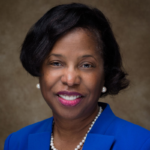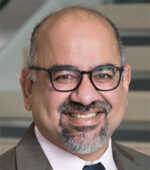For more than two decades, countless leaders in professional, continuing and online education have urged their institutions to embrace the power and promise of online learning. On many campuses, that call had been reluctantly answered, if not opposed, until the pandemic imposed a new reality on the world. The mass shift online created chaos that stressed systems, faculty, staff and students.
Examining those early, frightening months of pandemic restrictions, this article discusses the strategies, risk-taking and best practices employed by three leaders, all tasked with devising solutions to the radical change thrust upon them:
- Dr. Tonya Amankwatia, Assistant Vice Provost, Distance Education and Extended Learning, North Carolina Agricultural and Technical State University
- Dr. Nancy Coleman, Dean of the Division of Continuing Education and University Extension, Harvard University
- Dr. Sunay Palsole, Assistant Vice Chancellor for Engineering Remote Education, Texas A&M System.
In each case, they examined the role that their leadership style played in facilitating the rapid shift online and in ensuring quality outcomes amidst the confusion of those early weeks and months. They also found lasting opportunity in the chaos.
Focusing on outcomes
Fog is an apt metaphor for the chaos, ambiguity and uncertainty that swirled around all organizations as we began to understand the epic impact of COVID-19.
In higher education, almost overnight, leaders had to navigate supply chain and connectivity issues while simultaneously training faculty and ensuring the quality of the educational experience from the perspective of the educator, student, and in many cases, their parents. They had to plot their courses while facing obstacles and resistance and attending to personal and business needs.
At Texas A&M, Palsole adjusted his leadership style to meet the moment. Palsole had been noting the initial reports coming out of Wuhan, China, and he directed his team early to develop new techniques to train faculty. He typically has a collaborative leadership style with his direct reports, yet events required immediate action.
As he communicated workload changes, he received some initial pushback. Listening to and considering the resistance, he recognized the need to communicate a shared vision to move the institution with the speed required to meet the emergency. Making learning outcomes as their North Star to follow, he directed the team to move forward, and they co-created solutions that matched the speed of rapidly developing events. “Let’s not worry about tools. Let’s achieve the outcome,” he advised.
Keeping students and faculty at the forefront

At the Division of Continuing Education and University Extension at Harvard, existing infrastructure and online education programs had the division well-positioned for the switch. In July, amidst the chaos of campus closure, Coleman began her new role as the division’s dean remotely.
To forge connections rapidly without coming to campus, Coleman immediately joined meetings and projects in which a dean typically does not participate. For example, she joined technology meetings to quickly understand issues considered critical to her colleagues and the decision-making process.
At North Carolina A&T, Amankwatia employed an agile approach to content development and found strength in her leadership motto, “I care. You count.” She took the risk to provide time off for faculty, allowing them to develop courses in phases. Her team, working alongside contractors, redeveloped over 300 courses in four months, compared to over 150 in four years.
These leaders pressed forward by pursuing directions often not immediately apparent by joining in conversations atypical for their roles, by taking risks and by recognizing the strategic strength of empathy in times of crisis and anxiety.
Building a good teaching model
The massive shift to online learning during the pandemic was cringe-worthy at times amidst the uncertainty. For some leaders, distinguishing between remote learning and distance education helped clear the fog. They recognized the move online was not a solitary one, nor was it a straight path. It was an iterative and collaborative process with countless teamwork hours building upon existing distance learning structures.
These collaborations covered the gamut, addressing a range of topics such as technology supply, skills and methodology training for faculty, analysis of workflow, and creating student and faculty support. Palsole and his team partnered with faculty to understand their learning outcomes and workflows and to provide specific recommendations on which tools to use to support their outcomes.
“Good teaching is good teaching. You just add technology layers,” Palsole said. His teams helped changed the focus of faculty questions. Instead of ‘How do I do this in this technology?’ faculty and instructors were asked to consider, ‘This is what I want my students to learn. This is how I am planning to execute it. Do you see any issues with this approach?’ This advisory approach focused less on faculty rapidly mastering new technologies and more on teaching how the tools support the overall learning experience.
Creating a process to develop online learning

To help ensure quality educational outcomes, an iterative development process was adopted that regularly incorporated feedback from faculty and staff. “This is not an event. It is a process looking at quality,” noted Amankwatia in a sentiment that was shared by all three leaders. In varying ways, online learning best practices were taught to faculty. Partnering with instructional designers to create pedagogical templates was also used as a control for quality.
This approach also made for some unexpected wins. Having created a development pipeline, Amankwatia’s team simultaneously created online learning templates for the fall 2020 and spring 2021 semesters.
Additionally, support was a massive consideration for these leaders. They continue to provide robust, ongoing support after the initial training, and it’s often incorporated into existing infrastructure and tools.
North Carolina A&T, for example, employs both its Faculty and Learner Commons for that purpose. The Faculty Commons: Online Community of Practice includes orientation and diversity and inclusion instruction, among other things. The Learner Commons, a virtual student center, provides access to a virtual computer lab, the registrar, library, tutoring and other services typically found on campus.
Meeting the challenge ahead
Along the way, through assessments, surveys, help desk support and more, the leaders have gathered impactful insights. Amankwatia, for example, found that flexibility and purpose are keys to community building. In North Carolina A&T’s Learner Commons, Virtual Student Navigators, peers who are online at the same time as learners, help them navigate the Commons and provide a sense of community. The Commons built in serendipitous hallway conversations during break or in study groups that had been temporarily lost.

“The faculty collaborative space that organically developed around online learning was fascinating to see. Faculty do not get much credit sometimes. They are very creative in finding solutions to problems and sharing knowledge,” Palsole said. The learning experience as well is another way to build a community for faculty.
The leaders agree this radical shift has created an inflection point that has opened opportunities for all educators to view higher education differently. Despite the chaos of the emergency campus closing, all three leaders saw opportunity through the fog. They spoke with genuine excitement about the possibilities created by the pandemic.
“This is our time,” Coleman said. “This is a good time to be in continuing ed, and I am excited for the future.”
Author’s note:
*A dear friend recently shared the etymology of the term “radical.” During the 17th century, it was mostly used to mean “going to the origin, essential.” Considering this and one of the more modern definitions “favoring extreme changes in existing views, habits, conditions or institutions,” this transitionary period has been a radical inflection point. Good, bad or indifferent, many have faced extreme changes in their views of online learning, their habits and the conditions in which they taught and learned.
Marsha Prospere is an executive coach and founder of the New York City-based Adept Flow coaching and organizational development practice. Marsha leads a staff Leadership Development program and learning community at Rutgers University.

